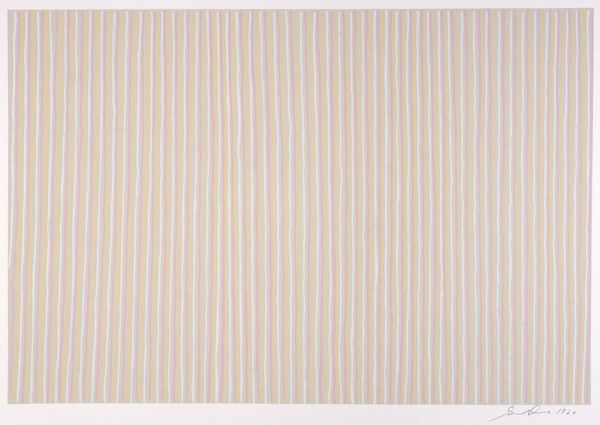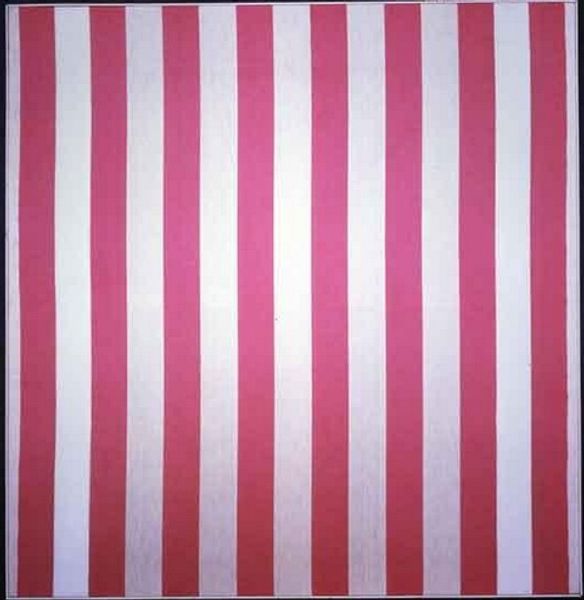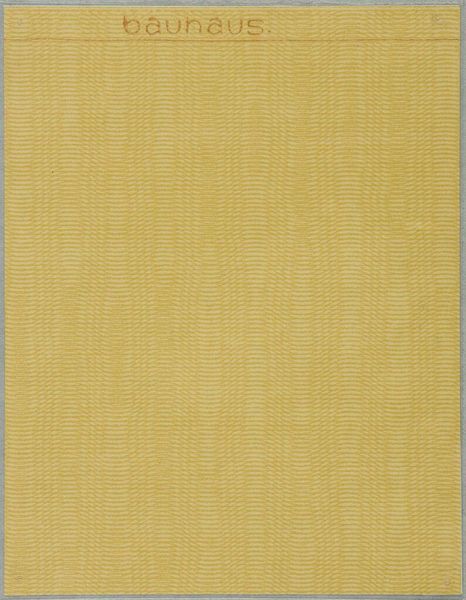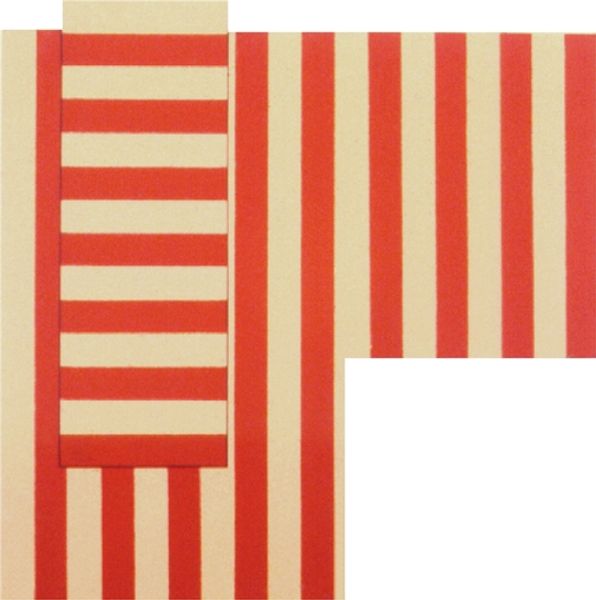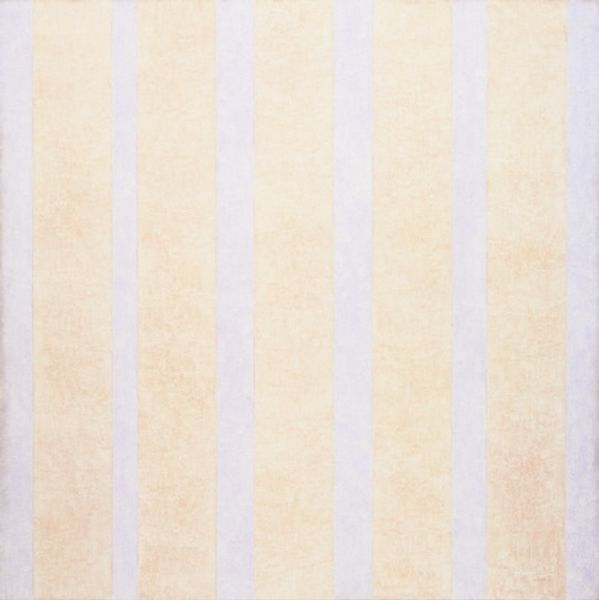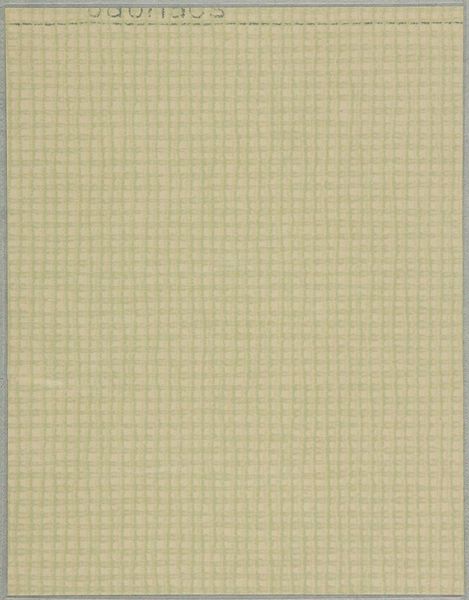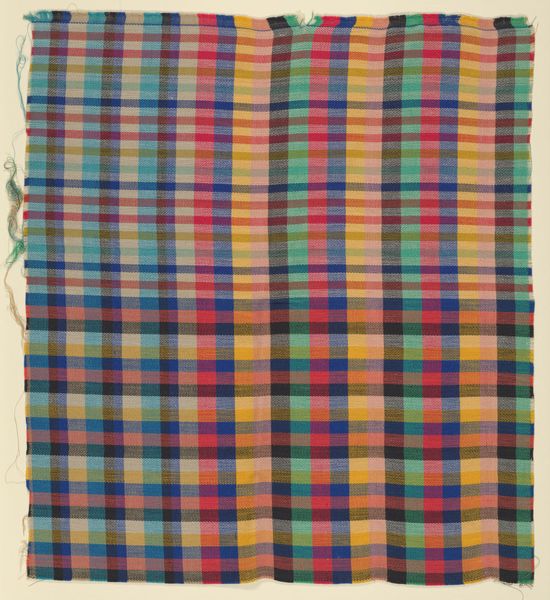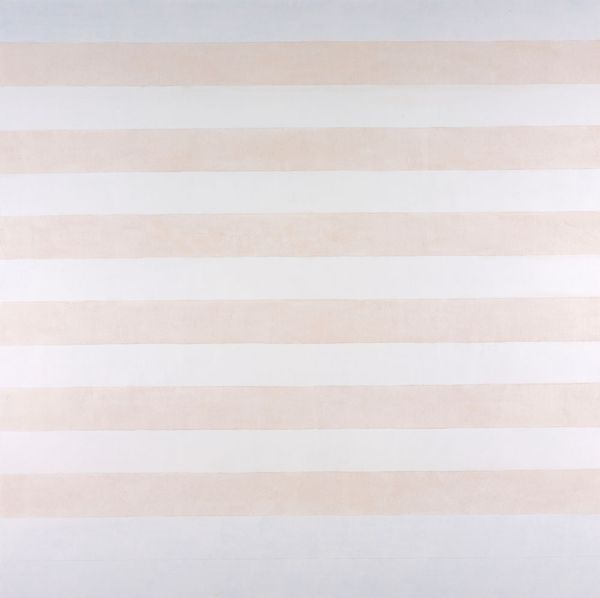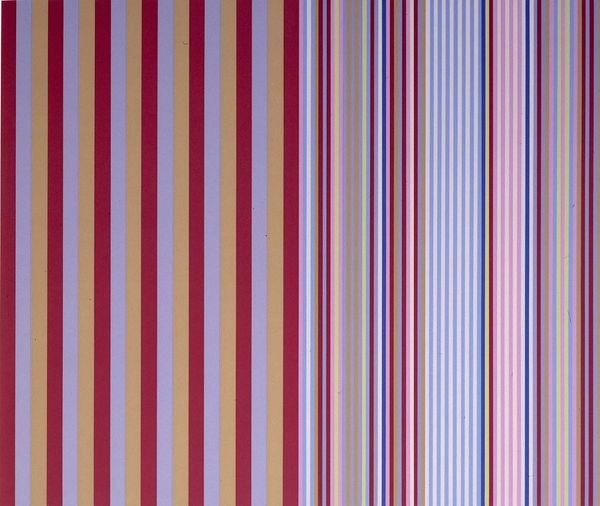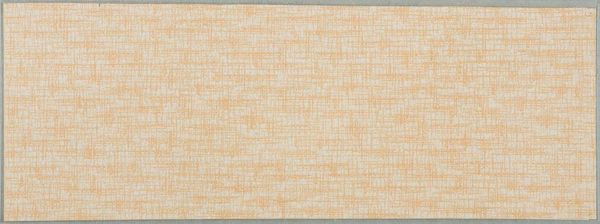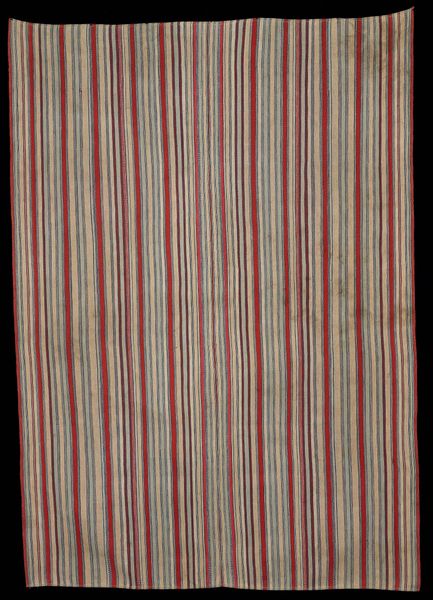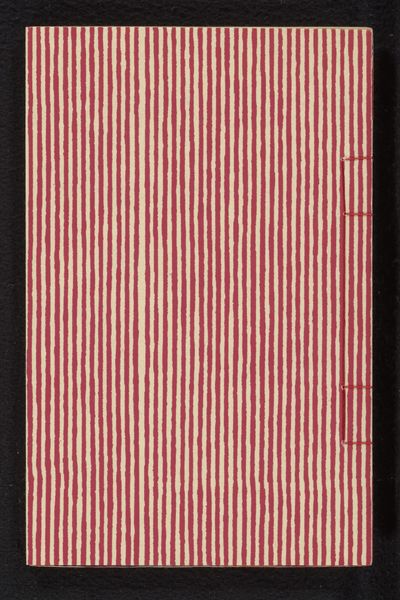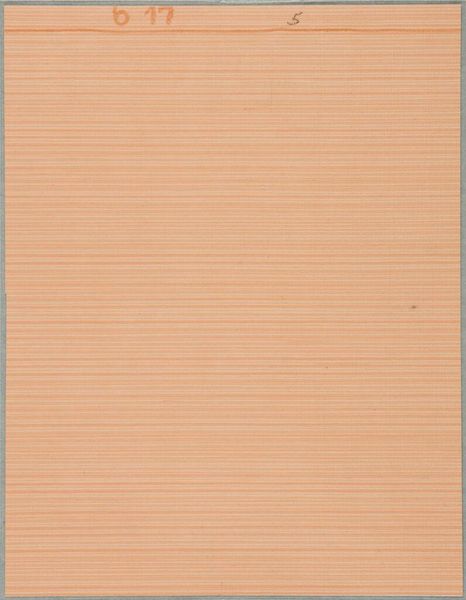
textile, acrylic-paint, site-specific
#
conceptual-art
#
minimalism
#
textile
#
acrylic-paint
#
geometric
#
site-specific
#
line
Copyright: Daniel Buren,Fair Use
Curator: This is Daniel Buren's *Peinture acrylique blanche sur tissu rayé blanc et orange,* created in 1967. The work consists of white acrylic paint applied to white and orange striped fabric. Editor: My immediate reaction is a sense of calculated simplicity. The repetition and stark contrast create an almost hypnotic effect, doesn't it? It's bold yet oddly calming. Curator: Precisely. Buren's signature stripes, always 8.7 cm wide, were a deliberate move towards artistic neutrality. The readymade striped fabric challenges the notion of artistic authorship. Editor: Neutrality, perhaps, but it's also loaded with potential readings. The stripes, with their uniform regularity, remind me of systems, social structures, even prison bars. What did this mean during the social movements of the late 60s? Curator: An intriguing observation. Buren was, indeed, interested in the relationship between the artwork and its environment, often creating site-specific installations. Editor: So the stripes aren't just an aesthetic choice; they're a framework for understanding how art functions within and acts upon the space it inhabits, politically or socially. Curator: Precisely. The uniformity allows the viewer to focus less on the subject of the work itself but rather on how it interacts with and transforms its surrounding environment. This is quintessential conceptual art; the idea is paramount. Editor: And by stripping away conventional artistic expression, he forces us to confront our own assumptions about what constitutes art and its role in our lives. It's a simple gesture, really, but one rife with implications for the viewer and our relationship with art as something to possess, own, or have dominion over. Curator: Absolutely, Buren challenges the art market and notions of originality. I always return to that simple structural device and how it unlocks so many avenues of art appreciation. Editor: For me, it’s that tension between the seeming emptiness and the rich context that makes this piece fascinating, still, after all this time. Curator: Agreed. It's a testament to the power of reduction and a reminder that sometimes, the most profound statements are made with the fewest elements.
Comments
No comments
Be the first to comment and join the conversation on the ultimate creative platform.
